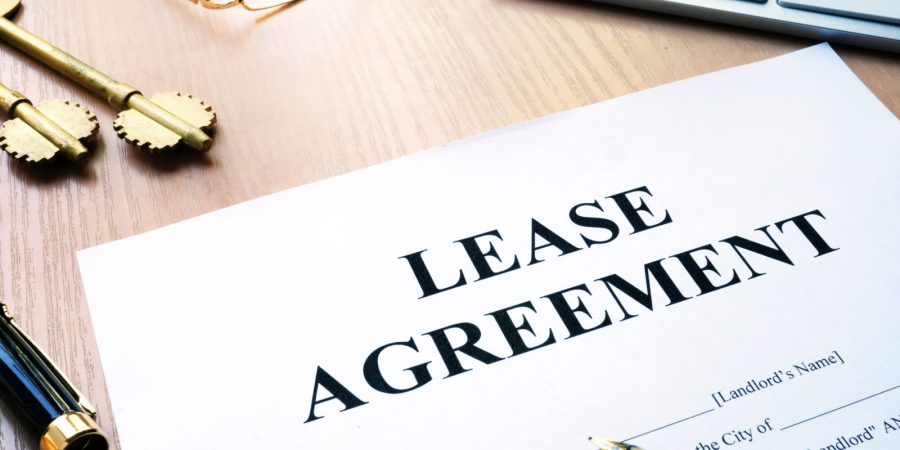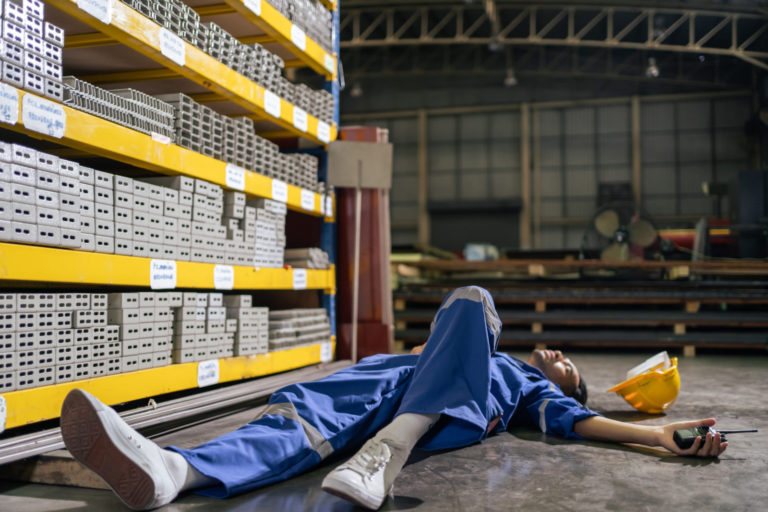If you’re renting a commercial space, you’ll need to sign a commercial lease agreement. However, lease agreements are often written with a confusing amount of legal jargon. Also, you might not know which important lease terms to look out for, and what they even mean. If it’s your first time renting a commercial space, the whole process might seem overwhelming and confusing. We wrote this guide to help you understand a commercial lease agreement easily. Here are the 10 most common commercial lease terms you’ll find in Singapore, and what they mean for you & your business.
What is a commercial lease agreement?
A commercial lease agreement is a legal contract between a tenant (the business renting a space) and a landlord (the owner of the space). A commercial lease agreement sets out the key terms of the rental agreement, such as the amount of rent, deadlines for rent, who is responsible for fixing damage to the property, and more.
Since they are contracts, commercial lease agreements are legally binding. If one party breaks the terms of the commercial lease agreement (e.g. a tenant breaking the lease early, or a landlord not repairing the building when they were supposed to), the party who suffers a loss can sue the other party for damages.
What are the most common terms in commercial lease agreements?
Most landlords will provide the following terms in their commercial lease agreements:
10 Most Common Commercial Lease Terms in Singapore | ||
No. | Lease Term | Explanation |
| 1 | Lease duration | Specifies the exact period (e.g. 24 months) that the lease agreement will run for |
| 2 | Rent | Specifies the exact amount (e.g. SGD 10,000/month) that the tenant must pay |
| 3 | Rent review clause | Specifies when the landlord can review (i.e. increase) the rent during the lease period |
| 4 | Deposits and other fees payable | Specifies the exact amount of security deposits (e.g. 1 months’ rent)Also specifies any other fees payable, such as agent fees |
| 5 | Utility and other maintenance fees | Specifies who is responsible for utilities (e.g. water, electricity) and maintenance (e.g. painting the building, maintaining electrical wiring, etc.) |
| 6 | Renovations | Specifies the tenant’s responsibilities when carrying out renovation work, to ensure the premises is not damaged |
| 7 | Sub-leasing | Specifies whether sub-leasing (a tenant renting their space to someone else) is allowed, and if it is allowed what conditions must be fulfilled by the tenant |
| 8 | Reinstatement | Specifies the responsibilities of the tenant to restore the property to its original condition when the lease expires |
| 9 | Illegal employment of foreign workers | Prohibits tenants from engaging in illegal employment practices with foreigners |
| 10 | Commercial insurance | Specifies the type of commercial insurance the tenant must purchase (e.g. public liability insurance, commercial property insurance), and the amount (e.g. no less than $500,000) |
1. Lease Duration
This term will specify the exact duration of the commercial lease.
Lease terms depend on the nature of your commercial space (e.g. office, F&B, retail, industrial, etc.), and the size of your space. Leases for spaces under 3,000 square feet can run between 1-3 years. Larger spaces above 3,000 square feet generally run longer, from anywhere between 3- 6 years or more.
Lease renewal option
Landlords will typically grant tenants a renewal option. This is a right, but not an obligation, to extend your lease beyond the initial period. For instance, if you sign a 3-year initial lease with an option for a 3-year renewal, you can lease the space for 6 years, before you have to sign a brand new lease agreement (which may come with different terms than your initial lease agreement).
Lease renewal options benefit both tenants and landlords. A renewal option is good for tenants because it prevents them getting forced out by another business, who could outbid them on rental offers and take over their space. It’s good for landlords because it offers tenants an incentive to stay on, thus maximising rental profits.
Early lease termination
This clause specifies penalties payable if tenants terminate the lease early. In the vast majority of commercial leases (as with residential leases), the tenant will remain liable to pay the rent for the remainder of the lease, unless they can find another tenant to replace them. Breaking a lease early is a breach of contract, so landlords have the right to sue such tenants for damages.
2. Rent
This will state the exact amount of rent payable to the landlord. This is sometimes also termed “Gross Rent”. Rent is usually payable on a monthly basis.
Rent will usually comprise the following:
- Base Rent: This is based off the square footage of your premises, plus
- GST: Prevailing Goods and Services tax, plus
- Service Charges: These are maintenance charges levied by the landlord, for expenses like maintenance, security, fire prevention, repairs, etc.
Most commercial leases will also have a condition that service charges can vary from time to time during the lease, depending on the exact costs incurred by the landlord. If you’re a tenant, make sure you have sufficient financial cushion to weather any potential increases in service charges.
Rent-Free Fitting Out Period
It’s common for landlords to allow tenants a rent-free period while they renovate their premises. Usually, most lease agreements will provide the tenant with 1 month of free rent during this initial fit-out period.
3. Rent Review Clause
Longer leases (those which last for 4 to 6 years, or more) frequently will contain this clause. This allows the landlord to adjust the rent, according to prevailing market rates. This prevents the landlord being locked into an agreement where tenants pay below-market rent.
4. Security Deposits, and Other Fees
This term will specify the exact amount of security deposit the tenant has to place with the landlord, along with the tenant’s responsibility for other fees. Most lease agreements will ask for between 1-3 months worth of rent as a deposit. Longer-dated leases that will run for many years may ask for 6 months of rent (or more) as a deposit.
Security deposits protect the landlord against tenants who may breach the terms of the lease agreement. For instance, tenants may inadvertently cause damage to their premises. Damage can easily occur during the renovation process, or during the day-to-day running of the business. If there is damage, the landlord can deduct the cost of repairing the property from the security deposit. Also, if the tenant breaks their lease agreement early, the landlord can deduct the security deposit as compensation for lost rental income.
Other Fees: Stamp Duty
Tenants of commercial properties in Singapore must pay stamp duty. Stamp duty is payable to IRAS.
| Average Annual Rent (AAR) | Stamp Duty Rate |
| AAR under $1,000 | Exempted |
| AAR over $1,000 | |
| Lease shorter than 4 years | 0.4% of total rent for the duration of the lease |
| Lease longer than 4 years | 0.4% of 4 times the AAR for the duration of the lease |
Example: A restaurant rents a commercial premises for 2 years. The Average Annual Rent (AAR) is $120,000 ($10,000/month, times 12 months). Since the AAR is over $1,000, but the lease is shorter than 4 years, the stamp duty payable is 0.4% of the total rent over the 2-year lease.
Total rent payable over 2-year lease: $240,000 ($120,000 per year, times 2 years)
Stamp duty rate: 0.4%
Stamp duty payable: $960
The restaurant must therefore pay $960 in stamp duty to IRAS.
5. Utility and Maintenance
This term specifies who is responsible for paying utility bills (electricity, water, internet, phone, etc.). Under most commercial lease agreements, the tenant is usually responsible for all these utility costs.
However, maintenance costs are usually borne by the landlord. Maintenance refers to services like ensuring that common areas are kept in proper condition, maintaining the exterior of the building, ensuring that the electrical wiring is working properly, etc.
6. Renovations
Renovations have the potential to cause serious damage to the premises if not carried out properly. As such, commercial lease agreements will specify that renovations are to be done only in compliance with specific contractual requirements. For instance, commercial lease agreements may prohibit tenants from removing or altering basic fittings like pipes, air-conditioning ducts, electrical wiring, structural walls, and other built-in elements.
Renovation deposits
Commercial leases commonly will ask you for a renovation deposit. This is a sum of money held by the landlord while you’re carrying out renovation works. This acts as a form of security in case you damage the landlord’s property during renovation. The deposit will be returned to the tenant after renovations are done, and once the landlord has ascertained that no damage has been inflicted upon the commercial property.
Sometimes, instead of a cash deposit, the landlord may accept an Insurance Security Bond. This frees up cash flow for the tenant, especially if the renovations are extensive and the deposit sum required is large.
7. Sub-Leasing
This term will specify whether or not the tenant is allowed to sub-let their commercial space. For instance, an F&B space might sub-let a portion of their premises to a bakery operated by a 3rd-party. Generally, most commercial lease agreements will prevent the tenant from sub-letting their premises, unless the landlord has given explicit consent.
Sub-letting fees
If your commercial lease allows you to sub-let your space, the lease may also specify sub-letting fees which are chargeable. Read your lease carefully to ascertain the precise sub-letting fees you have to pay, if you sublease your space.
Sub-letting restrictions
Some landlords may restrict the types of tenants that you can sub-let your space to. For instance, some landlords may only allow you to sub-let to companies that you are a majority shareholder of, or another company that is your majority shareholder. There may also be restrictions on the types of businesses that you can sub-let to – for instance, some landlords may not allow you to sub-let to retail or F&B businesses.
8. Reinstatement
This specifies the requirement for tenants to reinstate the premises to its original condition once their lease expires. Most commercial leases will contain this requirement.
The commercial lease agreement will also specify the extent of reinstatement that needs to be performed when handing the property back to the landlord. Usual examples of such requirements include:
- Tenant must remove all their furniture, equipment, and other personal belongings
- Tenant must remove all their masonry/carpentry work (e.g. parquet flooring, brick flooring, cabinets) which they installed
- Tenant must remove all additional plumbing work (e.g. new pipes installed by the tenant)
- Tenant must remove all additional electrical and data cabling (e.g. new lighting/ethernet/telephone points and cables installed by the tenant)
- Tenant must repaint all walls and ceilings to their original colour
- Tenant must repair any damage to the premises that they caused (e.g. cracked walls)
- Tenant must remove all partitions and false ceilings they installed
- Tenant must restore all fire safety equipment to their original locations (e.g. moving fire extinguishers to a different location to accommodate office desks)
- Tenant must remove any additional fire safety equipment they installed (e.g. new fire extinguishers or smoke detectors installed by the tenant)
- Tenant must clean premises and ensure no refuse is left behind
Also, reinstatement clauses may state that the landlord has the right to appoint a specific reinstatement contractor, at the tenant’s cost. This means that as a tenant, you won’t have control over the exact cost of the reinstatement. Even if you find a cheaper contractor to carry out the reinstatement, you won’t be able to select them. If your lease agreement contains this clause, you may wish to consider negotiating on this point with the landlord. This can avoid nasty surprises later on if you get handed a large reinstatement bill, simply because the contractor knows you have no choice but to accept their prices!
9. Illegal Employment of Foreign Workers
This term is most common in F&B and industrial lease agreements. Landlords will insert this clause to protect themselves from legal liability in case their tenants hire illegal workers. This term prohibits tenants from engaging in unlawful hiring practices for foreigners.
10. Commercial Insurance
In most commercial lease contracts, landlords will ask tenants to carry the following types of insurance:
- Public Liability Insurance: Coverage amounts requested typically range from $1 million to $2 million, depending on the type and size of the commercial space. Click here to buy this insurance online in 3 minutes, from $9/month.
- Commercial Property Insurance (a.k.a. Property/Industrial All Risks Insurance): Coverage amounts requested typically range from $100,000 to $500,000. Click here to buy this insurance online in 3 minutes, from $12/month.
Public Liability Insurance protects tenants from lawsuits related to injury or property damage caused to third-parties. For instance, if a customer walks into your retail shop, slips and falls, they can sue you for causing personal injury. Public Liability Insurance would pay for your lawyer’s fees and damages.
Commercial Property Insurance protects your premises against physical risks like fire, explosions, certain kinds of water damage and other major risks.
Protecting your commercial premises and your business
After you’ve gotten your commercial space, make sure that you protect your business. Provide is the easiest, quickest, and most affordable platform to get business insurance in Singapore. Click the links below to get insured online, in just 3 mins!
- Public Liability Insurance from $9/month
- Commercial Property Insurance from $12/month
- Work Injury Compensation (WICA) Insurance from $5/month
- Directors & Officers (D&O) Liability Insurance from $42/month
- Professional Indemnity Insurance (business lawsuit insurance) from $42/month



